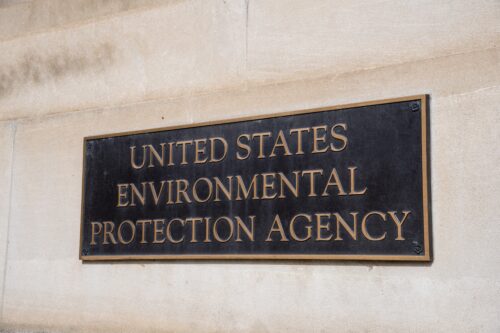
On March 1, 2024, states and local governments took a significant step towards combatting climate change with the release of their Priority Climate Action Plans (PCAPs) as part of the Climate Pollution Grant Reduction (CPRG) program. Energy and Environmental Economics (E3) supported the states of Hawaii, Idaho, New Mexico and New York with the analytical analysis underlying the key greenhouse gas (GHG) emission reduction measures elevated in their PCAPs. Looking ahead to the next phase of the CPRG program, we distill a few high-level insights and takeaways.
Authorized by the Inflation Reduction Act (IRA) and administered by the Environmental Protection Agency (EPA), the CPRG program provides $5 billion in grants to develop and implement plans for governments across the United States to reduce GHG emissions and mitigate harmful air pollution. The release of the PCAPs marks the first major milestone in the CPRG planning phase that precedes the development of competitive implementation grant applications.
PCAPs reveal diverse paths, emphasizing electrification and measures across many sectors
At the beginning of this month, state agencies and metropolitan statistical areas (“metro areas”) together submitted over 120 PCAPs to the EPA. The plans identify a diverse set of strategies, methodologies, and priorities, reflecting the distinct regional identities that shape local environmental policy. Our review of the PCAPs offers the following high-level insights on commonalities and differences:
- Climate mitigation strategies impact all sectors of the economy. Many climate plans demonstrate ambition by incorporating an array of measures that span at least four out of seven sectors identified. For example, the State of Arizona included measures across building, electricity, transportation, waste, water, and sustainable materials sectors. The Kansas City plan includes measures across buildings, transportation, urban greening, agriculture, food & waste and highlights several cross-sectoral measures focused on developing a green workforce, community training programs, and more. The Hawaii PCAP includes measures ranging from fleet electrification to implementing a decentralized compost network and planting native trees to restore critical ecosystems. These holistic approaches underscore the multifaceted nature of climate action and the need for cross-sectoral perspectives on climate planning.
- Emphasis on Transportation and Building Electrification. Transportation and building electrification measures were integral components of many PCAP applications. Measures range from improving vehicle charging infrastructure accessibility to building more walkable cities, reducing travel distances, and incentivizing adoption of heat pumps. For example, the State of Washington’s PCAP includes seven measures in the transportation sector to accelerate EV adoption, install EV chargers, build rail infrastructure, and assist rural transit. The State of Maine prioritizes a number of measures to modernize the state’s building portfolio, through electrification of heating systems and acceleration of weatherization programs.
- Need for interagency collaboration. Especially for metro area applications that span multiple states, the plans express the need for interagency and organizational collaboration to implement priority measures. For example, the PCAP for the Chicago metro area, comprising fourteen counties across three states and four metropolitan planning organizations, calls upon the need for coordinated regional action. In the state of New York, with four metro areas and state climate planning responsibilities across multiple agencies, the development of PCAPs required coordination among state entities, metro areas, local governments, indigenous nations and other stakeholders. The complexity of coordinating across jurisdictions underscores the importance of cohesive regional strategies and collaboration across states and regional governments that can bring greater scale and transformative change.
- Disparity in resources, tools, and level of granularity. The variance in availability of pre-existing climate plans and analytical resources contribute to the divergent approaches used in formulating PCAPs. For example, while states and metro areas in California and New York leverage robust existing resources to develop detailed plans, other regions rely more heavily on literature reviews and estimations in this first part of the planning phase. As governments work towards comprehensive climate plans, the granularity and level of detail in selecting and assessing priority measures is expected to increase.
Towards comprehensive climate planning: Need for integration of top-down GHG projections and bottom-up measure assessments
The PCAPs demonstrate a significant and unprecedented collective effort towards prioritizing and aligning climate planning across the United States. With relatively flexible criteria and requirements from EPA in the first part of the planning process, the PCAPs also clearly mark a first step, with more work to be done in the next phase of the program. The next step in the planning phase consists of the development of Comprehensive Climate Action Plans (CCAP) due in the second half of 2025. Specifically, transitioning to CCAPs necessitates a shift towards a top-down analysis approach, requiring GHG projections and targets, that effectively aligns short-term actions with long-term goals. This planning approach requires a nuanced understanding of factors like customer adoption behavior and technological advancements, as well as the integration of comprehensive long-term modeling tools with bottom-up assessments of short-term priority measures.
E3’s long-term climate pathways modeling – PATHWAYS – has been a critical tool for many state agencies and local governments, including those in California, New York, Hawaii and Colorado, to define near-term priorities and portfolios that align with long-term goals. In addition to using PATHWAYS to project long-term GHG emissions, E3 has worked together with state agencies and local governments to assess measure-specific impacts of near-term emissions reductions priorities using a more tailored approach that is consistent with long-term projections and goals. As the CPRG program advances, we encourage states, local governments, and the EPA to use a consistent framework to evaluate and integrate long-term goals with near-term actions.
We are excited to see the level of commitment at federal, state, regional and local level towards actionable climate planning. We look forward to collaborating with state agencies and local governments to develop tailored and consistent approaches to integrate top-down modeling with bottom-up measure analysis. For more information on our offerings, please contact Tory Clark, Partner or Zak Suttile, Director.


